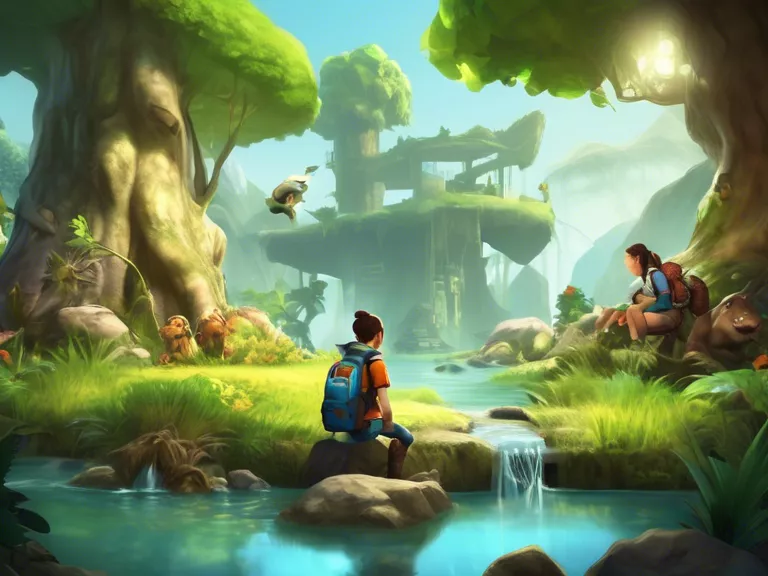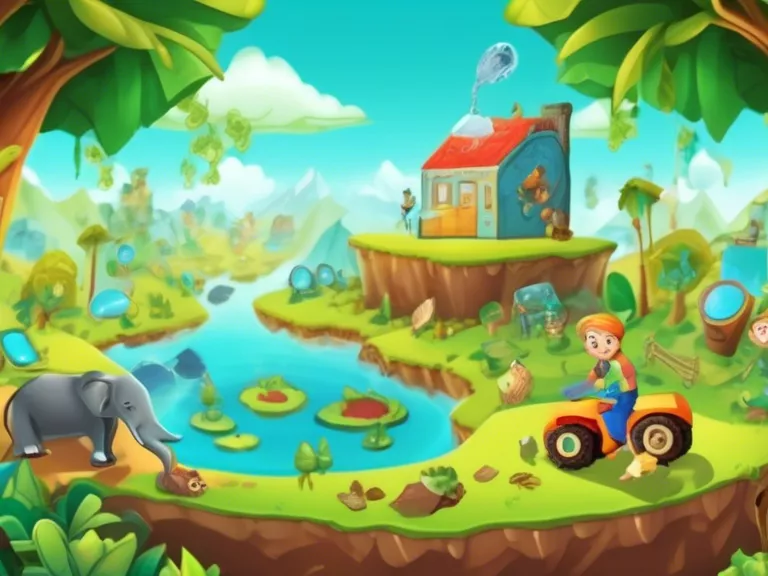
Introduction
In recent years, the use of games as a tool to educate and raise awareness about environmental issues has been gaining popularity. This approach, known as "play and protect," leverages the engaging nature of games to inform players about pressing environmental challenges and inspire them to take action in the real world. By incorporating environmental themes, game developers are not only providing entertainment but also fostering a sense of environmental stewardship among their audience.
The Power of Gamification
Gamification, the application of game-design elements and principles in non-game contexts, has been proven to be an effective method for engaging and motivating individuals. When it comes to environmental issues, gamification can be a powerful tool for educating people in a fun and interactive way. By turning complex environmental concepts into game mechanics, players can easily grasp the significance of issues such as climate change, deforestation, pollution, and biodiversity loss.
Types of Environmental Games
There are various types of environmental games that address different aspects of environmental issues. Some games focus on raising awareness about specific challenges, such as water conservation or renewable energy, while others simulate the consequences of human activities on ecosystems. Additionally, there are games that encourage players to adopt sustainable practices in their everyday lives, such as recycling, energy conservation, and eco-friendly transportation.
Benefits of Environmental Games
Engaging with environmental games can have several benefits for players. Firstly, games provide a safe space for individuals to explore and understand complex environmental issues without feeling overwhelmed or discouraged. By allowing players to experiment and make decisions in a virtual environment, games empower them to see the direct impact of their choices on the planet.
Furthermore, environmental games can foster a sense of empathy and connection with nature, encouraging players to develop a deeper appreciation for the environment. Through interactive storytelling and immersive gameplay, players can develop a personal attachment to environmental causes and become more motivated to advocate for sustainable practices in their communities.
Examples of Environmental Games
There are numerous environmental games available across different platforms, ranging from mobile apps to virtual reality experiences. Some notable examples include "SimCity," which allows players to design and manage sustainable cities, "Eco," a collaborative survival game where players must prevent ecological disaster on a virtual planet, and "Never Alone," which explores the relationship between indigenous cultures and the environment.
Conclusion
In conclusion, the "play and protect" approach to exploring environmental issues through games offers a unique and effective way to educate and inspire individuals to become environmental advocates. By leveraging the power of gamification, developers can create engaging experiences that not only entertain but also promote environmental consciousness and sustainable behaviors. As more people engage with environmental games, we can hope to see a positive impact on attitudes and actions towards protecting our planet for future generations.



